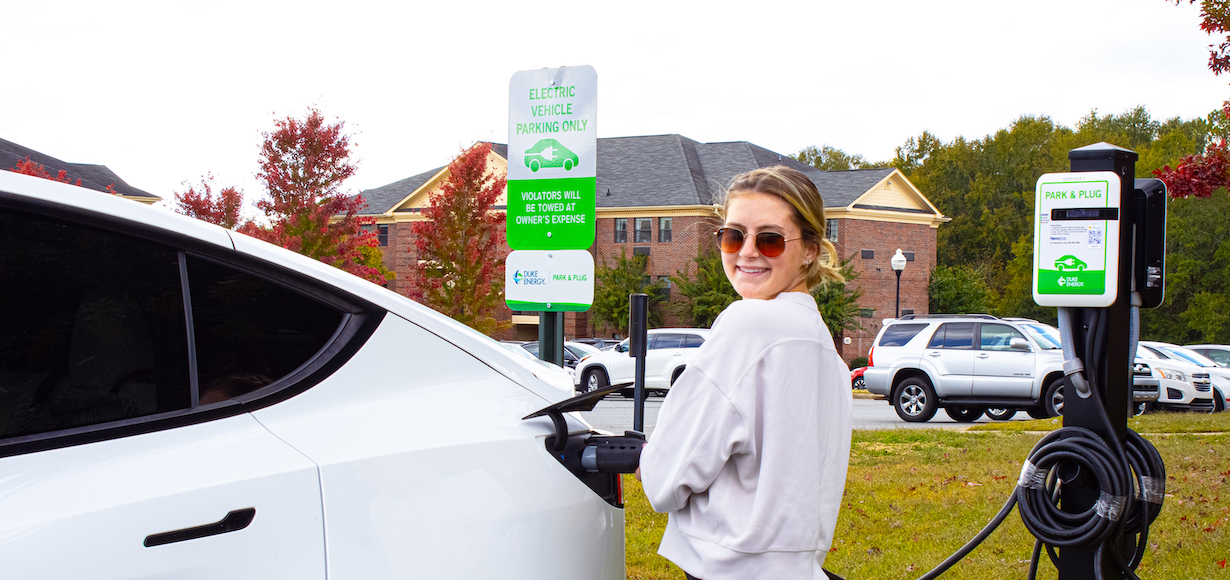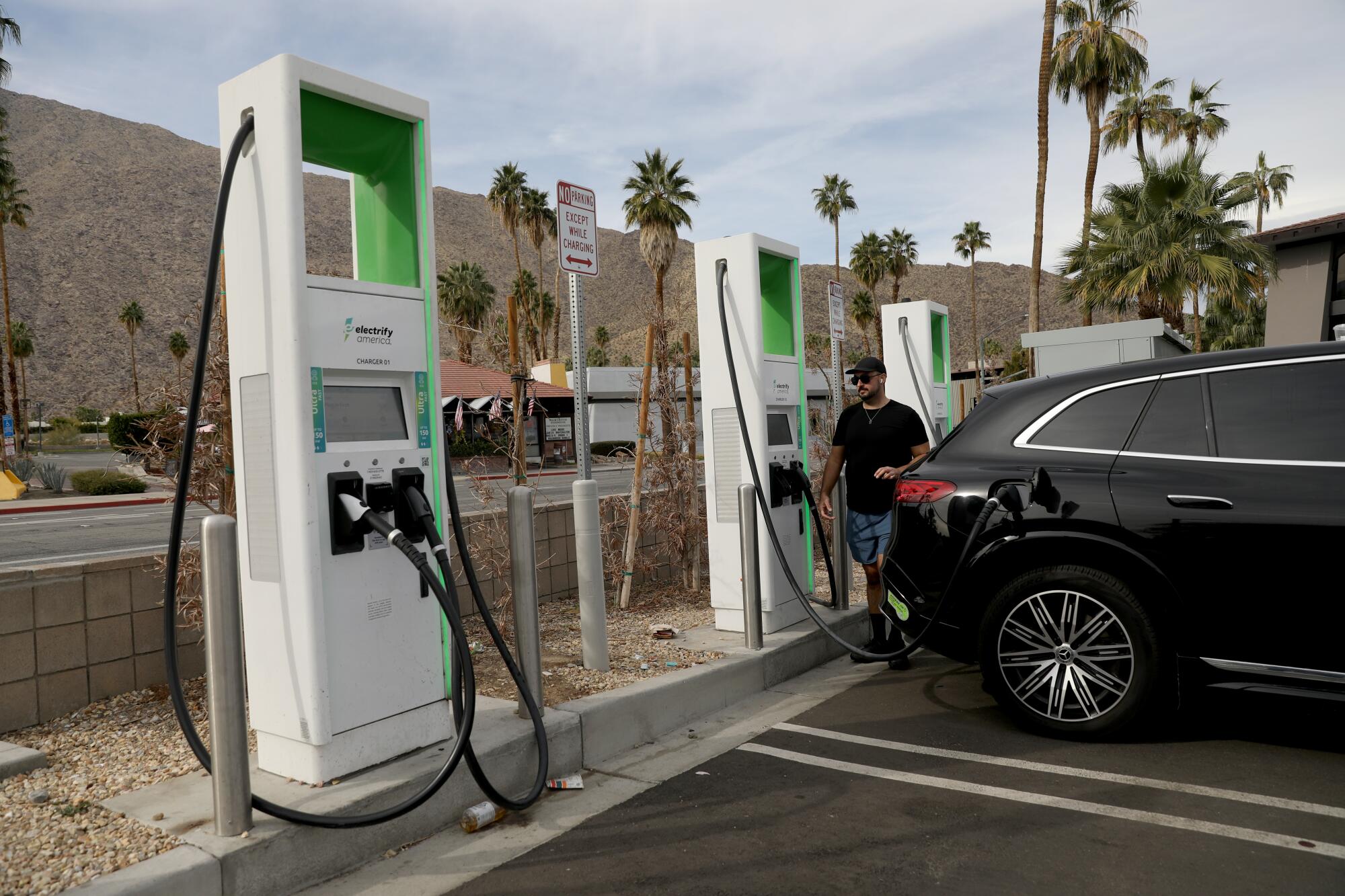What’s Driving the Growth of EV Infrastructure? Buy EV Charging news for Key Updates
What’s Driving the Growth of EV Infrastructure? Buy EV Charging news for Key Updates
Blog Article
New Developments in EV Charging: How the Market Is EVolving to Meet Demand
As the electric car (EV) market proceeds to increase, the charging infrastructure is going through considerable improvements to deal with the rising demand. Secret advancements in ultra-fast charging innovations, coupled with clever grid integration, are reshaping the landscape. Furthermore, advancements in battery modern technology promise improved efficiency and sustainability. The quest of global billing requirements continues to be an important variable in making it possible for smooth individual experiences and widespread adoption. The ramifications of these innovations elevate essential questions about the future of EV charging and its function in the more comprehensive energy community.
Development of Billing Framework
The fast expansion of electric car (EV) charging infrastructure is a critical part in assisting in the extensive adoption of electric wheelchair. As governments, personal firms, and consumers significantly identify the value of reducing carbon exhausts, investments in charging networks have actually risen. This facilities growth is important to reduce array anxiety, ensuring that EV users have practical access to charging stations.
Considerable improvements in billing terminal innovation and implementation strategies have actually emerged. Urban areas are seeing a spreading of public billing stations, while country regions are slowly being incorporated into the billing network. In addition, partnerships in between auto suppliers and billing service providers are ending up being extra usual, helping with the establishment of extensive networks that improve individual experience and availability.
On top of that, the assimilation of renewable power sources right into charging stations is getting momentum, advertising sustainability in the EV ecological community. This change not just supports ecological objectives however also straightens with the climbing demand for environment-friendly energy solutions among customers.
Ultra-Fast Charging Technologies
Ultra-fast billing technologies stand for a substantial leap onward in the EV charging landscape, making it possible for electrical lorries to reenergize in a portion of the moment compared to traditional billing approaches. These innovations normally supply power degrees surpassing 150 kW, with some systems rising to 350 kW or more, drastically lowering billing times to as little as 15-30 mins for a substantial fee.
Secret enabling innovations consist of improvements in battery chemistry, power electronics, and thermal monitoring systems. For example, high-capacity batteries with improved thermal stability enable faster billing without overheating. Additionally, developments accountable infrastructure, such as liquid-cooled cables and modular billing stations, assist in effective power transfer, enhancing the total individual experience
Major vehicle manufacturers and technology firms are actively purchasing ultra-fast billing networks, recognizing the critical function they play in getting over range anxiety and increasing the fostering of electrical vehicles. As these modern technologies come to be much more extensively readily available, the EV market is anticipated to witness significant growth, making electrical wheelchair an extra eye-catching option for customers. On the whole, ultra-fast charging modern technologies are crucial in shaping the future of sustainable transport, leading the way for a more efficient and substantial charging community.
Smart Grid Combination
Through demand response methods, smart grid systems can change charging routines based upon grid conditions and electrical energy rates. Throughout durations of high need, billing can be delayed to off-peak hours, resulting in lower costs for consumers and lowered strain on the grid. Furthermore, vehicle-to-grid (V2G) modern technologies make it possible for EVs to release energy back into the grid, improving and supplying supplementary solutions grid security.
Combination with renewable energy sources further increases the Learn More sustainability of EV billing. By straightening billing activities with durations of high solar or wind generation, smart grids advertise a greener billing infrastructure. Eventually, clever grid integration not only sustains the growing demand for EVs yet also adds to a more sustainable and resistant power future, positioning the industry for long-lasting success.
Battery Technologies
In the middle of the quick advancement of electrical lorries (EVs), battery technologies stand at the forefront, driving improvements in sustainability, effectiveness, and efficiency. As the need for EVs surges, scientists and suppliers are concentrating on improving battery innovations to resolve difficulties such as range anxiousness and charging times.
Lithium-ion batteries remain the most extensively utilized technology, yet brand-new materials and chemistries are emerging to improve power density and longevity. Solid-state visit this page batteries, for example, guarantee greater power storage space ability and enhanced security by replacing fluid electrolytes with solid ones. This change can substantially lower the danger of fire and increase the life expectancy of batteries.
Additionally, innovations in battery reusing processes are important for sustainability. Firms are developing methods to recoup beneficial materials like lithium, cobalt, and nickel from made use of batteries, promoting a round economic climate and minimizing environmental effect.

International Charging Requirements

Efforts are underway to establish global billing criteria that promote compatibility among different EV versions and charging terminals. Organizations such as the International Electrotechnical Commission (IEC) and the Society of Automotive Engineers (SAE) find out here are functioning collaboratively with automotive producers and energy companies to create extensive standards. EV Charging news. These standards objective to streamline the charging process, lower the requirement for several adapters, and boost customer experience
Moreover, standardization can significantly reinforce the expansion of the charging network, as it urges financial investment by making framework growth much more predictable and reliable. As the EV market develops, a unified strategy to charging requirements will certainly be crucial for making certain that consumers can bill their vehicles conveniently and reliably, therefore supporting the broader change to sustainable transportation.
Conclusion
The electrical lorry charging sector is going through considerable change to address the rising demand for lasting transport. Innovations accountable infrastructure, ultra-fast innovations, clever grid assimilation, and cutting-edge battery solutions are crucial in enhancing individual experience and functional efficiency. In addition, the quest of worldwide billing requirements is vital for making certain interoperability across various areas and systems. Jointly, these advancements place the market to support a more comprehensive adoption of electrical vehicles, inevitably contributing to a more lasting future.
Urban locations are seeing an expansion of public charging stations, while country regions are gradually being incorporated into the billing network. Furthermore, developments in billing facilities, such as liquid-cooled cords and modular billing terminals, assist in reliable power transfer, improving the general customer experience.
Generally, ultra-fast charging modern technologies are crucial in shaping the future of sustainable transportation, paving the means for a much more effective and substantial billing environment. - EV Charging news
By aligning billing activities with durations of high solar or wind generation, wise grids advertise a greener billing framework.Initiatives are underway to establish worldwide charging requirements that promote compatibility among different EV models and charging terminals.
Report this page